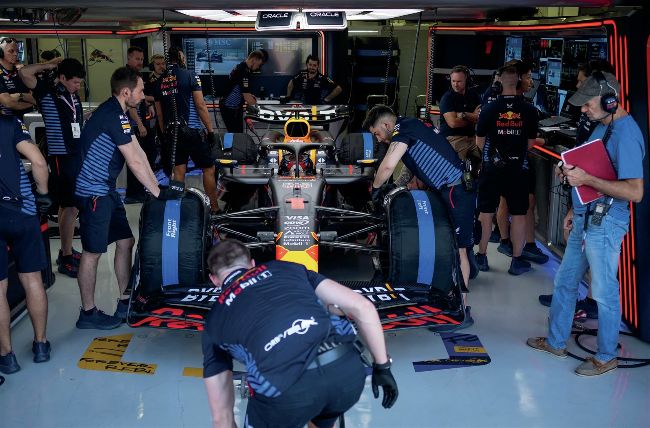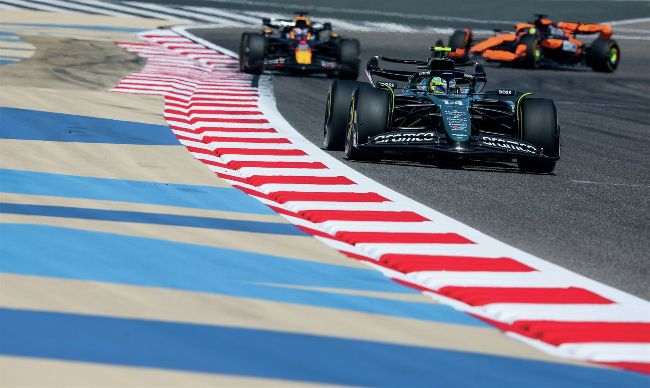Same cast. Different script?
There are no driver changes on the grid, but as the racing starts, Mark Hughes explains why upheaval is on its way – making 2024 an intriguing season...
F1 2024

Adrian Newey, above, oversees preparation for Max Verstappen’s Red Bull at pre-season testing in Bahrain

Perhaps a sight we’ll see through the season –
Fernando Alonso in front of a Red Bull RB20
AFP / FORMULA 1 VIA GETTY IMAGES, ANTONIN VINCENT / DPPI
With Hamilton to Ferrari for 2025 – and the avalanche of driver moves likely to follow, is the upcoming 2024 season already just a placeholder even before it’s begun? For the first time in history, there was not a single off-season driver line-up change. The technical regulations have been left pretty much alone too. So, should we expect a repeat of 2023? Another season of Verstappen-Red Bull annihilation of the opposition despite the recent management upheaval there?
Well, everything is in place for that team to continue to fly high even if Christian Horner is not there (and we await to hear the outcome of the internal investigation at the time of writing). If he does leave, his absence will surely be felt in the longer term. But for now, in the physical hardware at his disposal, and the super-sharp team operating it, Max Verstappen has all that he needs to do what he’s always done, which is to wring every last gram of performance from his racing car. It’s unlikely that it will be uncompetitive. If he’s less dominant than he was, it will only be because the others have stepped up their game. We live in hope.
But for the hope of a more competitive season to become a reality requires a) at least one of Mercedes, Ferrari or McLaren (and preferably all three) to have fully understood the Red Bull’s underbody/suspension philosophy and b) for Red Bull not to have found a whole lot more performance.
What should be considered in each of the two pre-conditions for a closer season of racing is that they both reside within a tiny window of ride height. In the ‘venturi’ cars of these regulations, mechanical bouncing intervenes to deny access to ultimate downforce.
Aerodynamically, these cars want to run with the rear almost scraping the ground at all times, as the downforce increases exponentially in the last couple of millimetres of gap between the ground and the tunnel’s throat. But in the absence of active suspension the car naturally rises up at the rear as speed bleeds off, so reducing the ‘ground effect’ help at lower speeds. This implies a rear suspension both very stiff and of limited travel – to minimise the ride height changes at different speeds. A suspension stiff enough to cope with the downforce capable of being created by the floor will tend to induce a resonance in frequency with the chassis, triggering the mechanical bouncing which destroys the whole process.